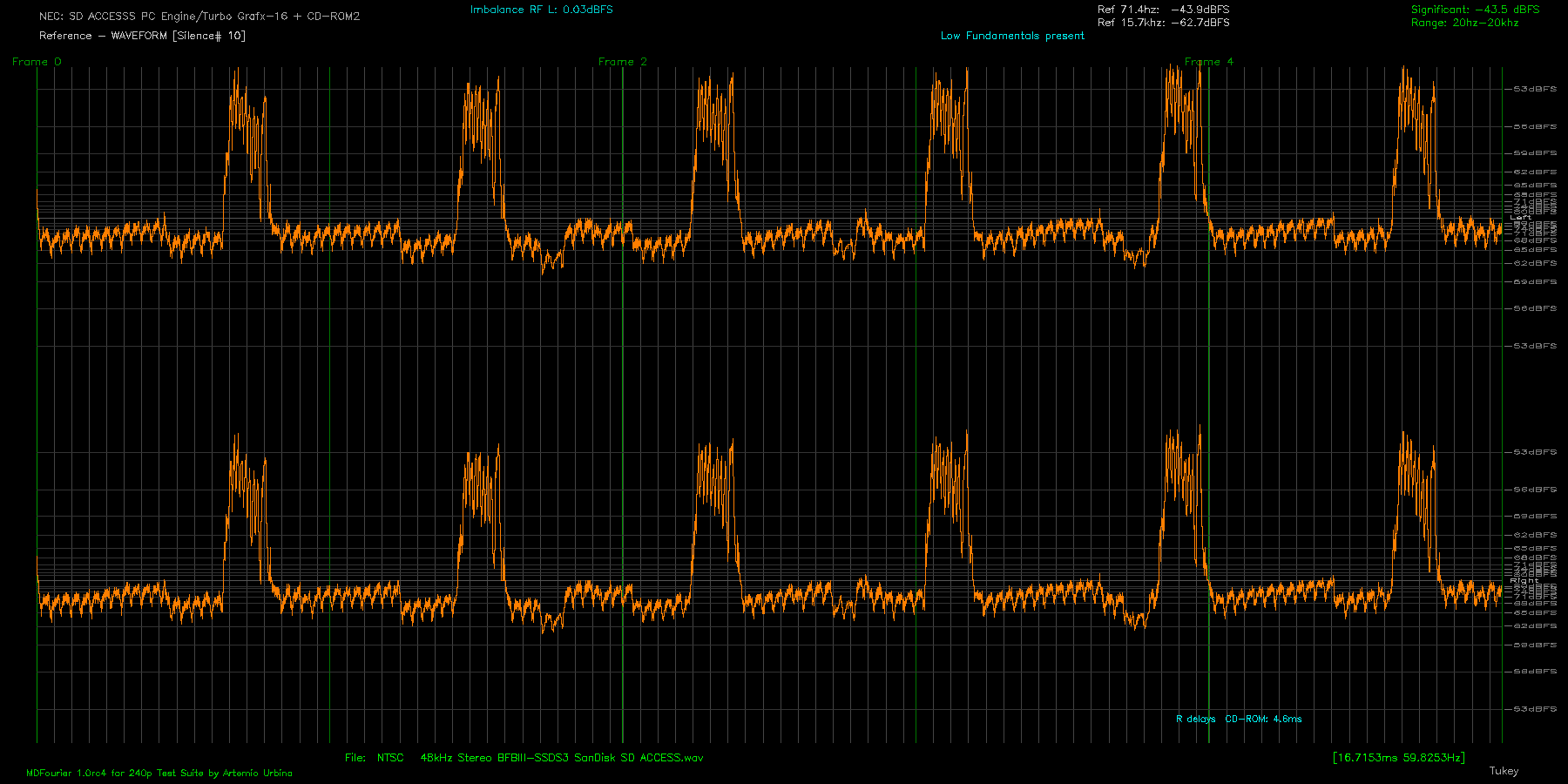
These series of quick notes are meant as stand alone bits of interesting data we find along while developing and polishing MDFourier. For the full documentation and the rest of the notes, please visit http://junkerhq.net/MDFourier.
It has been widely observed and reported in places like RetroRGB.com1 that certain Micro SD cards are noisier than others when coupled with popular optical drive emulators used in the retro gaming community. While cards that are less noisy were celebrated for a short time, other issues arose–what the community has dubbed “audio stretch,” a distracting slowdown in the audio that lasts somewhere between 5-10 seconds and is triggered every 20-35 minutes depending on the card. We wish this was a report that IDed the card that is both quiet during SD access and exhibits no “audio stretch,” but rather this is an short exploration of a tool we hope to use to find such a card.
Artemio Urbina has started this process by altering the PC Engine CD port of MDFourier so that during the usual time CDDA audio is accessed in the test, a simple frequency free WAV file is streamed. This rather straightforward hack means any audio recorded during that time is the result of noise introduced by the process of access and not the frequency content of the (now empty) WAV.
In addition, Artemio has introduced a zoom feature for waveform use, so that we can see as much or as little detail as we want for analysis in the time domain. We can also use the regular method of comparing this noise in the frequency domain and both can be very useful for different applications.
I present to you the SD access noise of two cards analyzed in the time domain as captured from the SSDS3.
But PLEASE KEEP IN MIND that every 20 minutes or so the Transcend card exhibits the audio stretch issue mentioned above and is therefore not ultimately a recommended solution.
More study is required and we hope this is an initial step in that direction.